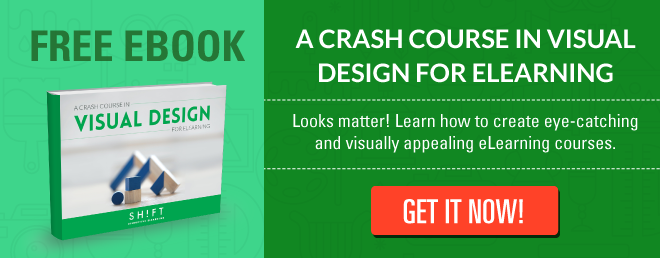When you go into a funhouse or corn maze, there are literally dozens of paths that you can try to take. What strategy do you take when trying to complete the course? Do you run as fast as possible, not caring how many wrong turns or dead ends you take? Do you develop a strategy and create markers for yourself, so you don’t backtrack? Do you set markers and have an idea of how far you have gone?
These are all different choices that you make. Similar choices can be made when it comes to authoring an eLearning course. It can be overwhelming to actually sit down and create the course. However, there are tried and true steps to take before firing up that authoring tool and start designing an eLearning course.
Make sure to do these things first:
1) Outline Course Goals
Starting to design an eLearning without a clear understanding of your goals is a surefire way to failure.
Your goals and learning objectives influence every aspect of your eLearning course design, so never skip this step!
There are multiple levels of objectives. At the highest level are course objectives. There are also lessons, modules, and supporting objectives. Before you jump into putting images and text on the screens, you must develop the course objectives.
What is the broader goal of the course? This will influence the more granular objectives you create. From this goal come up with 1-2 big ideas. These ideas will drive further decisions. When you come to a moment in the course in which you need direction, think of the big idea and use that to guide what you do. These course goals need to meet external and internal learner requirements.
Read: Are You Writing Rockin’ Course Objectives? 7 Do’s and Don’ts
2) Scope the Course
Before jumping to the design phase immediately, you need to fully scope everything that will be needed for the course.
- Who will be involved? Define key stakeholders on the project and what are their roles
- Set deliverables and timelines
- Identify all learning assets and resources needed
- What is your overall budget?
If you do not set boundaries and clear limits, then you can easily get overwhelmed and have work to do that does not contribute to the completion of the course.
Read: 7 Factors For Ensuring a Successful eLearning Implementation
3) Know Your Audience
Understand your audience: their current knowledge, their abilities, job roles, and what needs they have for your eLearning content.
What information do the employees really need to know? Are you developing a module for executives, people who have two years of experience, or people who have over 30 years in the field? Which skill sets need to be developed?
Research and define the course audience in terms of their expectations of eLearning, IT literacy levels, and their existing knowledge and experience level.
By understanding your audience, your eLearning becomes learner-driven, establishing successful eLearning environments where the needs of the learners are answered. Consequently, the training becomes more engaging and useful.
Helpful resources:
- These 27 Questions Will Help You (Really) Know Your Learners
- The 5 Best Ways to Research Your eLearning Course Target Audience
- A Template to Carry Out an eLearning Audience Analysis
4) Choose An Instructional Design Model - Follow a Proven Process to Design Your Course
To create engaging eLearning courses, you need to go beyond visuals! Understanding how people learn and applying instructional design principles is key to designing a course packed with useful content and strategic activities that will help your learners retain new knowledge or skills and apply what they learn at work.
There are dozens of different learning models to use for guidance in an eLearning course and each framework has its own advantages and disadvantages. The choice of which to use will depend on which model works best for you, your company, and your learners.
But using an instructional design model will not only help you create better learning experiences but also take the guesswork out of course creation. Following a proven framework created and tested by expert educators will assure your learning experience is effective.
These are some of the most popular instructional design models:
- ADDIE Model
- Merrill’s Principles of Instruction
- Gagne’s Nine Events of Instructions
- Bloom’s Taxonomy
- Dick and Carey Model
Here's A Quick Guide to Four Instructional Design Models
5) Storyboard
While it can be tempting to jump straight into your authoring tool, spending time mapping how to organize your course content beforehand and going into enough detail on what each specific screen will cover, will set you up to deliver effective learning experiences.
There are tools that you can use to storyboard your course. However, you can also use Microsoft PowerPoint (Grab this template here) or simple pen and paper. This storyboard can be as detailed or simple as you want it. At the bare minimum, it requires that you write a couple of words for every idea that is going to be added to the course.
Make sure that you plan for interactions, spaced activities and include a variety of ways to present information ranging from text to infographics and videos. Also, make sure that everything you add to the course has a purpose. Do not add an image simply to add one. It should add meaning and provide a learnable moment.
If you just run straight ahead without thinking about and mapping the course, you run the risk of creating random and nonsensical eLearning experiences.
Read: A Simple Guide to Creating Your First eLearning Storyboard
If you follow these steps, you are well on your way to setting the stage for an awesome eLearning experience. This can seem like a tedious and time-consuming process. However, if you just run straight ahead without thinking about and mapping the course, you run the risk of creating random and nonsensical eLearning experiences.



